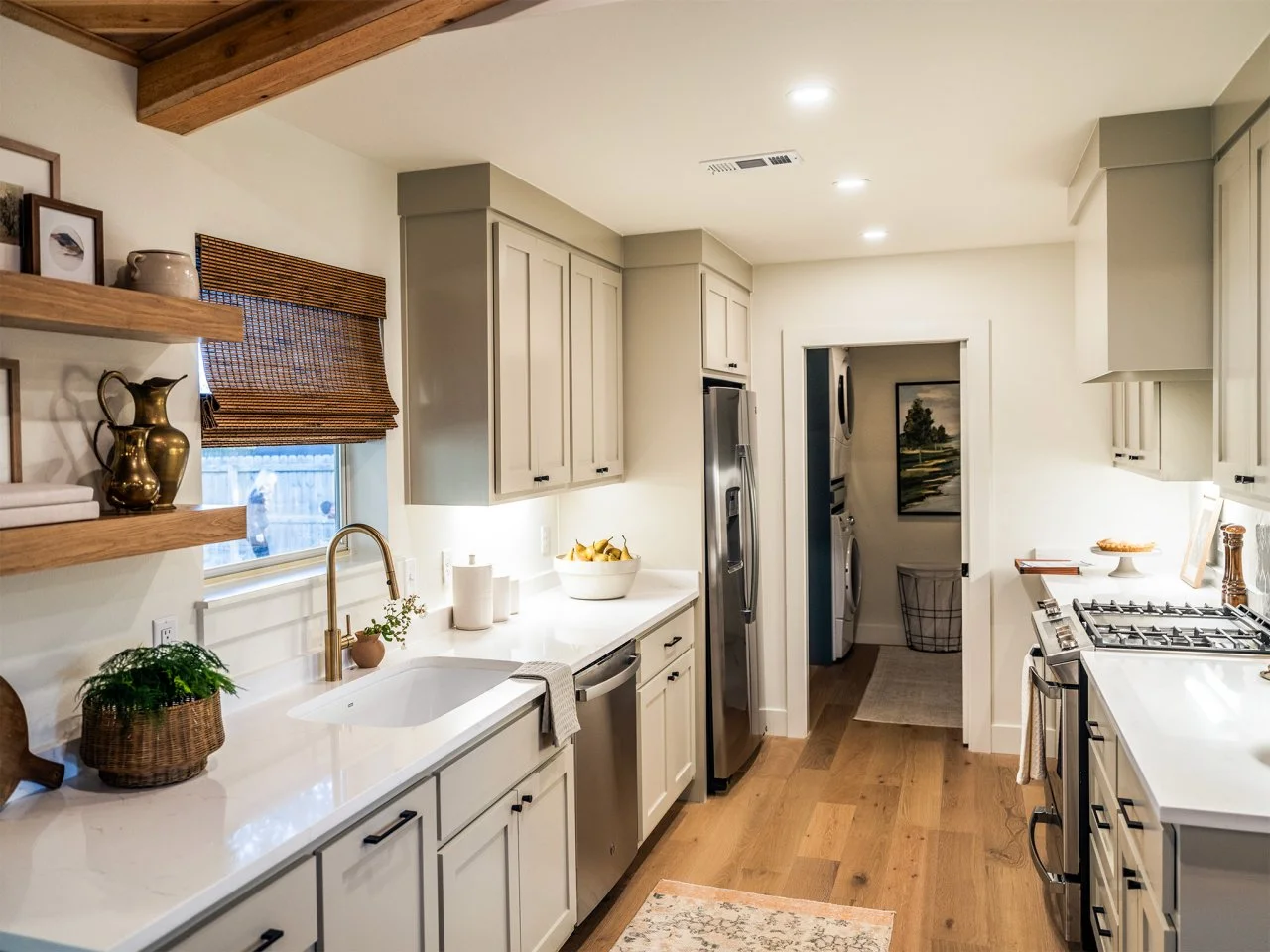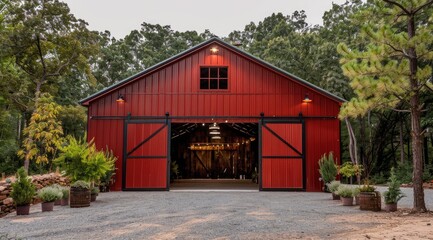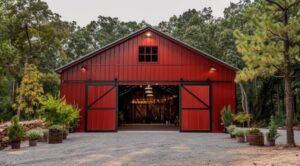A full kitchen remodel is a comprehensive overhaul of your kitchen, often including significant structural changes. It’s ideal for homeowners seeking to create a luxurious and personalized kitchen environment.
A kitchen renovation is a more budget-friendly option that’s ideal for those who want to refresh their culinary space without altering its fundamental structure. These updates offer a more modest upgrade that can significantly improve functionality and enhance aesthetics. Contact Kitchen Remodel Tacoma now!

The layout of a kitchen is one of the most important decisions during a remodel. A well-thought-out layout will make the space efficient and comfortable to work in. It will also help you avoid any structural changes that may incur added costs and unforeseen delays.
The galley kitchen layout is a popular choice for tight spaces. It features two parallel walls with a walkway down the middle and appliances and cabinetry on both sides. This design is a great fit for streamlined workflows, particularly in commercial kitchens that need to minimize the distance staff needs to travel between stations.
An L-shaped kitchen is another flexible option for smaller spaces. This layout has countertops on two adjacent walls forming an “L” shape, making it easy to retain the golden kitchen work triangle. If you want to add an extra workspace, consider extending one arm of the “L” into the room to create a peninsula.
For larger open-plan spaces, consider a U-shaped kitchen layout to maximize counter and storage space. This design spreads the points of the kitchen work triangle over three adjoining walls – two parallel and one perpendicular to each other. In this design, you can place a central island or a breakfast nook in the corner, depending on your needs. Be sure to include plenty of seating in your kitchen to encourage a family-friendly atmosphere and increase usability.
Cabinets
Cabinets are the heart of any kitchen, so it’s important to consider their shape, style and configuration. They can make or break a room’s design, especially if you opt for custom options, which provide unlimited flexibility in terms of size, materials and layout.
Stock cabinets, available at home centers and kitchen showrooms, are typically stocked in standard widths, heights and depths. Their quality varies, but most are made with 1/2-inch MDF and have wood veneer or thermofoil doors. You can upgrade to plywood carcasses for an additional charge, and you may have a choice of door styles and finishes.
Face-frame cabinets have a wood frame attached to the front edges of the box, which covers the cabinet doors when closed. Traditional overlay doors abut the frame, but less conventionally, inset doors fit closely into the face frames for a clean look.
The body of a cabinet is usually constructed of plywood or higher-quality particle board, particularly for flat sections that don’t need to be shaped, such as shelves and cabinet sides. These materials are strong and relatively durable, and they’re less susceptible to warping from moisture. Cabinets are also available in a wide variety of shapes, sizes and finishes, including painted, stained or natural wood. Shaker-style cabinets, for example, are easy to clean because they lack intricate moldings that tend to collect dust. Other options include a glazed finish that can be hand-washed and an antimicrobial surface that repels bacteria and other harmful microbes.
Countertops
The countertops are where you dice up vegetables, roll out dough or set down the family’s favorite meal. They need to withstand the rigors of everyday living and serve as beautiful workhorses in the kitchen, but they also need to complement the overall aesthetic and match your style preferences.
Lighter-colored materials like quartz or white granite can amplify natural and artificial lighting, helping your kitchen to feel brighter and more spacious. On the other hand, dark surfaces like marble or soapstone absorb more of the light in the room and may make a small kitchen feel closed in.
In addition to determining which color and finish you prefer, consider your budget and durability needs. If you’re on a tight budget, laminate countertops are back in a big way with new patterns that mimic the look of stone, wood or quartz at a fraction of the cost. For a more sophisticated finish, resurfaced concrete and solid surface options are durable enough for food prep but still add a pop of visual interest to your kitchen.
Another option is to add integrated lighting beneath your counters or cabinets for a soft, subtle glow that highlights the colors and textures in the countertop. This can also help to reduce glare and eyestrain in busy areas of the kitchen. With recessed downlights, you can also use the right positioning to light up your upper cabinets and open shelving without casting harsh shadows on the countertops or walls.
Appliances
The kitchen is so much more than a place to cook. It’s a hub for family and friends, the place where we share meals and stories, the place that sets the stage for our daily lives. So it’s important to take the time to consider how you want your kitchen to function and make sure that your appliances support those goals.
Choosing new appliances can be an exciting prospect, especially with the latest technology on the market. From voice-activated UI systems to integrated operating systems, new appliance technology is becoming more and more integrated into the kitchen. This makes it easy to choose a new appliance that meets your design goals while providing the functionality you need.
Energy efficiency and sustainability are other important factors to consider when choosing kitchen appliances. Look for appliances that have built-in air and water purification systems to reduce their environmental impact and help you live a healthier lifestyle. You should also consider the materials used to make these appliances and how they can be recycled or biodegraded at the end of their lifecycle.
Lastly, it’s important to understand the maintenance requirements for your appliances to ensure that they are working as efficiently as possible. Regular cleaning, following the manufacturer’s instructions and scheduling professional servicing will help you get the most out of your new appliances. These simple steps can make a big difference in how well your kitchen appliances perform and their overall lifespan.
Flooring
Flooring is an important kitchen remodel component, and you’ll have plenty of options to choose from. However, choosing the right style depends on your kitchen’s aesthetic and how you intend to use the space. For example, a classic marble floor would be a perfect fit for a luxury kitchen, but might not work with your more casual design.
It’s also important to consider how your kitchen flooring will affect the rest of the room. If you choose a material that contrasts with your cabinets, it can make them look out of place. It’s best to avoid this issue by matching or coordinating your floor and cabinet color.
Many designers and builders prefer to install the flooring first, followed by the kitchen units. This method provides a seamless, continuous look that most homeowners find aesthetically pleasing. It also reduces the risk of kitchen unit installation causing damage to your new floor.
Whether you decide to follow the cabinets-first or flooring-first approach, it’s always wise to have a budget for your kitchen remodel and to stick to it. This will ensure that your remodel doesn’t become more extensive than you originally intended and put your project at risk of going over budget.
Once you have your budget in place, it’s time to start thinking about the overall kitchen layout. Some homeowners may want to opt for a galley kitchen design that places cabinets on three walls with a central island, while others might prefer a U-shaped layout that offers plenty of storage space.
Lighting
Your kitchen is where your family and friends gather, whether you’re sharing a meal or socializing over cocktails. Adding lighting to highlight focal points, showcase wall art and other decorative features, and brighten your cooking space are all ways to enhance this much-used area.
While both remodeling and renovation are often used interchangeably, the former refers to a complete overhaul of the room’s layout and design, while the latter simply refreshes surfaces and upgrades elements to add functionality. A kitchen remodel is also a great way to increase the overall value of your home.
The most important consideration when choosing the best kitchen lighting is balancing function with aesthetics. Decorative ceiling fixtures like chandeliers can provide ambient lighting that highlights the decor, while pendant lights and track lighting are popular options for illuminating kitchen islands. Under-cabinet lighting is another option for highlighting your countertops and other workspaces.
If you’re planning on spending a significant amount of time in your kitchen, choose materials that are easy to clean and durable enough to withstand heavy use. While trendy colors and materials may be tempting, it’s important to create a timeless design that will stand the test of time. Investing in high-quality appliances, adding smart technology and making sure all areas are properly illuminated will help your kitchen to shine for years to come.


